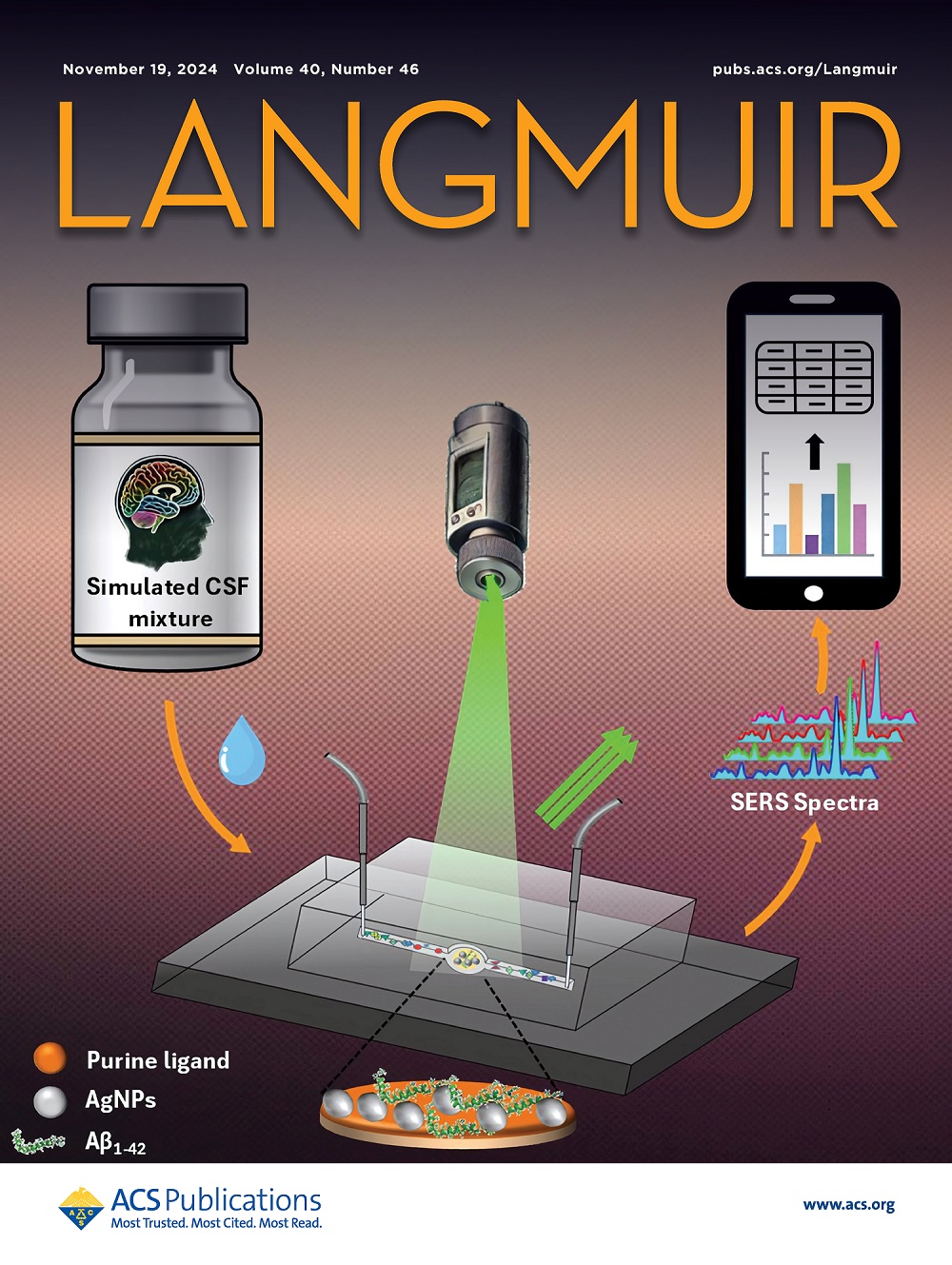Numerical Study of INDO4 Molecules: Ordering of Centered Honeycomb Structures and Central Molecule Switching.
IF 3.7
2区 化学
Q2 CHEMISTRY, MULTIDISCIPLINARY
引用次数: 0
Abstract
We simulate the ordering of centered honeycomb patterns formed by elongated s-indacene-1,3,5,7(2H,6H)-tetrone (INDO4) molecules recently observed on Ag(100) and Ag(111) surfaces. Based on a detailed analysis of STM images and plausible intermolecular interactions, we propose a coarse-grained six-state model similar to multistate lattice models used in phase transition theory. Each state in our model corresponds to a distinct molecular orientation, while the ordering of the two centered honeycomb phases is governed by four main distance-dependent intermolecular interactions. The fundamental building block of these phases is a 7-molecule honeycomb with the central molecule adopting different angular positions. For INDO4/Ag(111), this leads to switching of the central molecule between two orientations. Within our model, we derive ground-state phase diagrams and attribute this switching to degeneracy in the interaction energies of the two centered honeycomb phases. Our Monte Carlo simulations nicely corroborate these results. To quantify intermolecular interactions, we performed DFT calculations to obtain pair and trio interaction potentials. Furthermore, we computed the expansion energy of the centered honeycomb (7-molecule cluster) for both orientations of the central molecule and determined that the degeneracy occurs at the cluster expansion length of 1.3-1.4 Å.INDO4分子的数值研究:中心蜂窝状结构的排序和中心分子的开关。
我们模拟了最近在Ag(100)和Ag(111)表面观察到的细长s-吲哚烯-1,3,5,7(2H,6H)-四酮(INDO4)分子形成的中心蜂窝状图案的排序。在详细分析STM图像和分子间相互作用的基础上,我们提出了一个类似于相变理论中使用的多态晶格模型的粗粒度六态模型。我们的模型中的每个状态对应于一个不同的分子取向,而两个中心蜂窝相的顺序由四个主要的距离依赖的分子间相互作用决定。这些相的基本组成部分是一个由7个分子组成的蜂巢,中心分子采用不同的角度位置。对于INDO4/Ag(111),这导致中心分子在两个取向之间切换。在我们的模型中,我们导出了基态相图,并将这种切换归因于两个中心蜂窝相相互作用能量的简并。我们的蒙特卡罗模拟很好地证实了这些结果。为了量化分子间相互作用,我们进行了DFT计算,以获得对和三人相互作用势。此外,我们计算了中心分子两个方向的中心蜂窝(7分子簇)的膨胀能,并确定简并发生在簇扩展长度为1.3-1.4 Å。
本文章由计算机程序翻译,如有差异,请以英文原文为准。
求助全文
约1分钟内获得全文
求助全文
来源期刊

Langmuir
化学-材料科学:综合
CiteScore
6.50
自引率
10.30%
发文量
1464
审稿时长
2.1 months
期刊介绍:
Langmuir is an interdisciplinary journal publishing articles in the following subject categories:
Colloids: surfactants and self-assembly, dispersions, emulsions, foams
Interfaces: adsorption, reactions, films, forces
Biological Interfaces: biocolloids, biomolecular and biomimetic materials
Materials: nano- and mesostructured materials, polymers, gels, liquid crystals
Electrochemistry: interfacial charge transfer, charge transport, electrocatalysis, electrokinetic phenomena, bioelectrochemistry
Devices and Applications: sensors, fluidics, patterning, catalysis, photonic crystals
However, when high-impact, original work is submitted that does not fit within the above categories, decisions to accept or decline such papers will be based on one criteria: What Would Irving Do?
Langmuir ranks #2 in citations out of 136 journals in the category of Physical Chemistry with 113,157 total citations. The journal received an Impact Factor of 4.384*.
This journal is also indexed in the categories of Materials Science (ranked #1) and Multidisciplinary Chemistry (ranked #5).
 求助内容:
求助内容: 应助结果提醒方式:
应助结果提醒方式:


